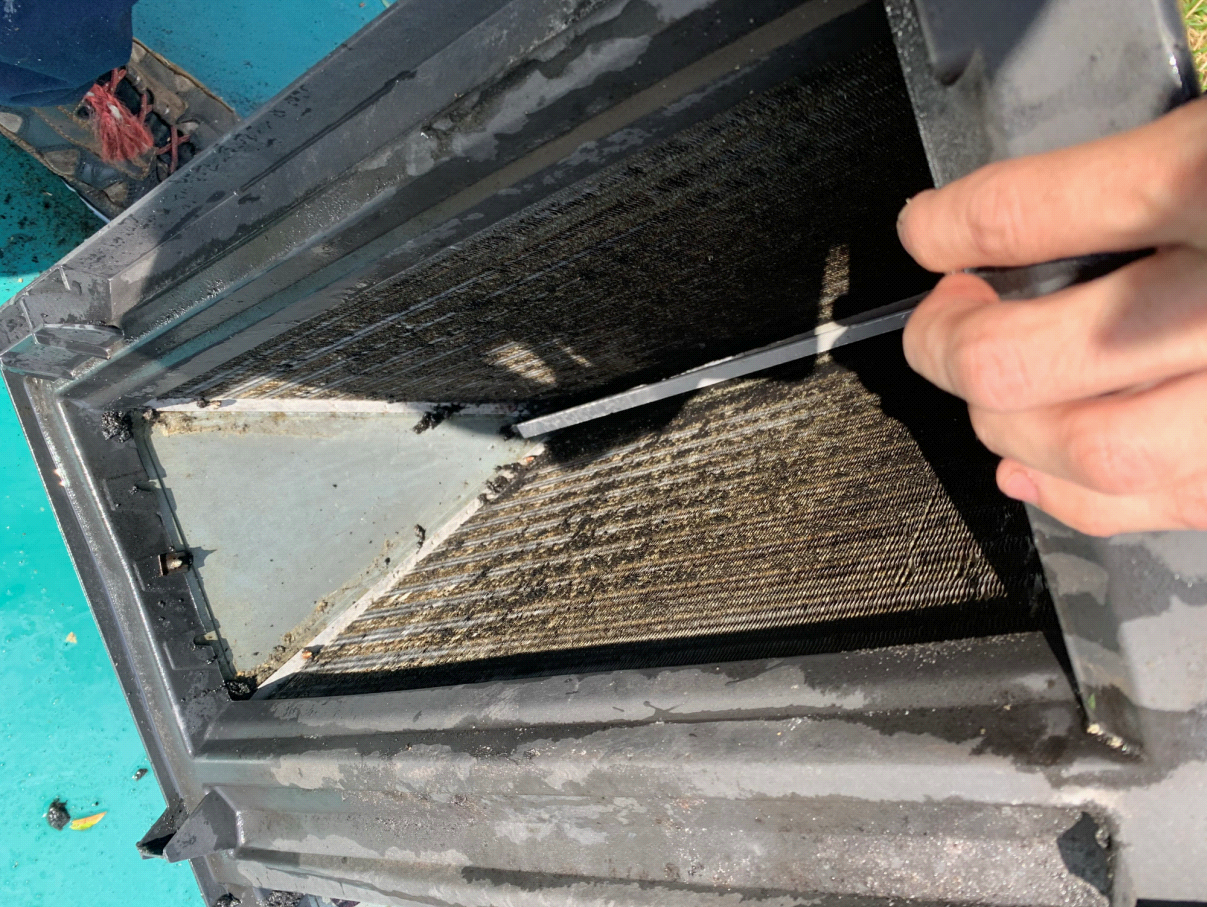Table Of Content

And if that seems overwhelming, don’t worry—there’s a solution on the way. We rely on readers like you to share your HVAC system cost or quote. It really helps other visitors to estimate the cost of a new HVAC unit.
How do I clean the inside of my air conditioner fins?
The Care and Cleaning of Air Conditioning Coils - ACHR NEWS
The Care and Cleaning of Air Conditioning Coils.
Posted: Tue, 21 Jun 2022 07:00:00 GMT [source]
This will give you better access to the coils, and make cleaning them much easier. As AC coils are typically made from copper or aluminum, they can be cleaned with water. Rinse the coils on any outdoor central AC unit by spraying with water from your garden hose on a low setting. Meanwhile, there are number of design and manufacturing techniques available that either reduce or prevent formicary corrosion. For example, coils made with aluminum, tin plate, or polymer sealed copper are more effective against formulary corrosion than copper.
Fix the fins on the condenser coils
The process starts when your AC unit pulls in warm air from your home through a return duct. The air then passes over the evaporator coils, which are filled with a refrigerant that absorbs heat. The now-cool air is then blown back into your home through the supply ducts. How to clean AC evaporator coils with no-rinse spray foam cleaner for routine seasonal maintenance. If you’re not comfortable cleaning the AC evaporator coils yourself at least you’ll what’s needed when calling a Heating, Ventilation and Air Conditioning (HVAC) professional.
Your fridge is running all the time but the food’s still warm.
How To Clean Your Air Conditioner Condenser Coils, According To An Expert – Exclusive - House Digest
How To Clean Your Air Conditioner Condenser Coils, According To An Expert – Exclusive.
Posted: Wed, 12 Oct 2022 07:00:00 GMT [source]
When it's time to clean the AC condenser coils in your outdoor HVAC unit, hosing them down with water is an ideal cleaning method. If you've already switched off the electrical current to the HVAC system, it's safe to spray water from a garden hose onto the condenser coils. However, Provincial Heating & Cooling Inc. warns that you should affix plastic wrap securely around the motor and electrical wires to avoid water damage. Although moderate pressure from a garden hose is recommended, the intense water pressure from a power washer may damage the condenser coils and fins.
Just so we are on the same page, this is about how to clean ac evaporator coils inside house. The blower motor forces air upward (recall my air handler is an “updraft” or “upflow” type) through the furnace and air conditioner evaporator coils. The Heat and Cool functions of the thermostat ensure that either the furnace or the air conditioner operate, but never both at the same time. The supply air plenum box sits on evaporator coil sheet metal cabinet. The large trunk flex ducts connect to rigid duct board distribution trunk ducts that lay on the attic joists. Several smaller flexible duct branch lines are taken off the rigid trunk duct to supply air to vents throughout the house.

I like the Nu-Calgon Evap Foam because the manufacturer’s page (previous link) includes directions and literature. I used a similar Nu-Calgon coil cleaner in the Heavy Duty AC Evaporator Coil Cleaning project. The evaporator coils are a vital component of your air conditioning system, responsible for absorbing heat from the indoor air.
A lot of dirt and dust should blow away from the AC unit when you do this. One pro tip is to blow the air from the cleaner side of the coil out to the dirtier side. This stops you from accidentally blowing more dirt and dust onto the cleaner part of the coils. Get your hands on a compressed air can to clean your evaporator coils. You should be able to see the coils as soon as you open the access panel. If you’re struggling to locate them, consult the owner’s manual yet again.
Why you need to clean your condenser coils—and what happens if you don’t
The refrigerant fluid becomes a hot vapor; the outside air absorbs the heat, lowers the temperature, and changes the fluid from gas to liquid. The liquid travels back to the evaporator, which is then blown through your air ducts as nice cool air. Once the coils are clean and soap-free, let the unit air dry for a bit. Then, replace the fan, reattach the side cover, screw everything in place, and turn the power back on to the AC unit. Using a screwdriver or a cordless drill, remove the fan from the condenser unit.
A Specialized Cleaner Will Enhance the Cleaning Process
The gas cools down the coils so that the coils stay cold, and therefore, so does your home. We’ll walk you through how to clean both evaporator and condenser AC coils. While it isn’t a super quick process, we think — with our help — you’ll get the hang of it. They are subject to a build-up of dirt, dust, and other home contaminants. Now, the cleaner the surface area of those coils is, the more efficiently the machine works.
Additionally, a furnace typically lasts about 15 to 20 years, while a heat pump lasts about 10 to 15 years. The two main types of heat pumps commonly used for residential homes are air-source and geothermal heat pumps. And if you are looking for any other sort of air conditioning repair services in or near Phoenix, AZ, make sure to contact our office.
Furthermore, this metal casing carrying the unit’s evaporator coils is usually hidden in a closet, loft, or other out-of-the-way location. Another reason to clean your AC coils regularly is because a lot of dirt and dust accumulates in there. It can then blow back into your house, contaminating the air. If you already have allergies or are immuno-compromised, this will be hazardous to your health. If the aluminum fins on the condenser coils are bent, straighten them out with a fin comb by gently combing through the fins.
If you keep a regular air conditioner maintenance schedule and get your coils cleaned on a consistent basis, your air conditioner should function effectively for many years. Now that you’ve done the hard part, you can turn your air conditioner back on and enjoy fresh, cool air once more. The whole cleaning process shouldn’t take long, as long as you can find your coils and get to them. Remember, you should always put things back the way you found them, including all of the aluminum tape that seals the lines and box of your AC unit. You don’t want to create a leak in the system by leaving something loose.
The greenish/whitish discoloration on the copper refrigerant lines is from dissolved copper deposits that have dried. The plastic drain pan looks in good condition with no cracking or leaks. I should expect to replace the coil and/or air handler in a season or two as it approaches the end of its expected life. Air conditioning systems play an important role in keeping your home cool in the hot summer months. The first thing you need to do when cleaning your evaporator coils is to gather the proper tools for the job.
Although some homeowners might try to clean their evaporator coil themselves, this service is best handled by a trained Carrier HVAC technician. Cleaning the condensor coils is a very common refrigerator repair. Condenser coils are located on the back of the fridge or across the bottom. When the coils are clogged with dirt and dust, they can’t efficiently release heat. The result is your compressor works harder and longer than it was designed to, using more energy and shortening the life of your fridge. Effectively, your evaporator coil works by capturing heat from inside your home.
Lightly guide the brush parallel to the fins on the coils in order to avoid bending them. For evaporator coils with more build-up, you will have to work a little harder to clean them. Use a mild detergent or a cleaning agent designed especially for cleaning evaporator coils. While DIY is an option for how to clean AC coils, some homeowners may prefer leaving the task to the professionals. During a routine HVAC maintenance visit, technicians inspect and clean the evaporator coils, along with other essential components. Now that you understand the importance of cleaning AC evaporator coils, here’s a step-by-step guide on how to clean indoor AC coils.

No comments:
Post a Comment